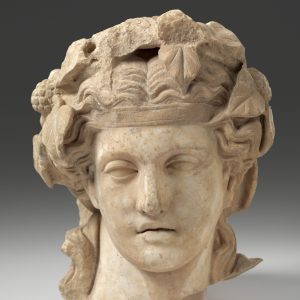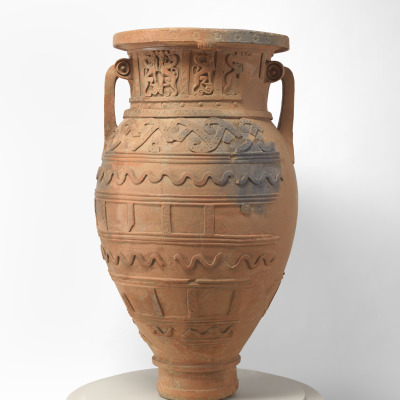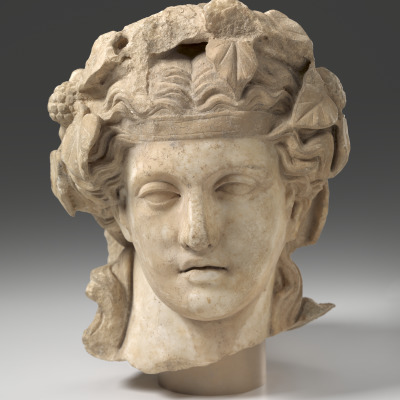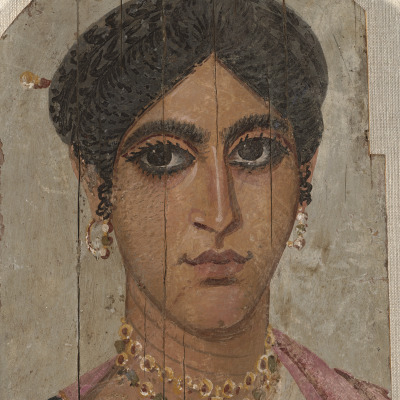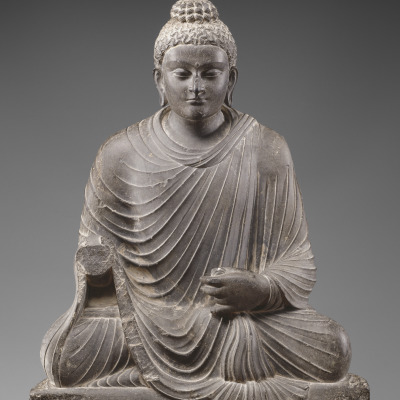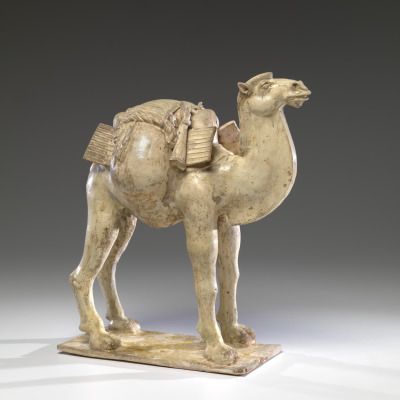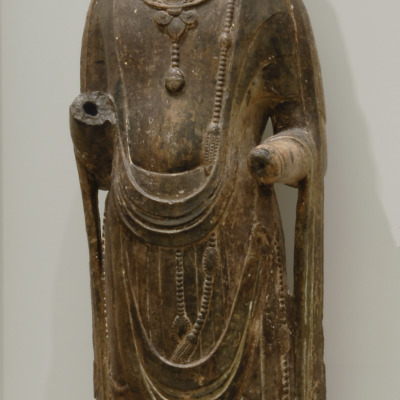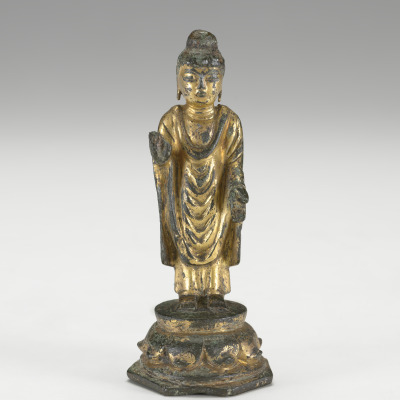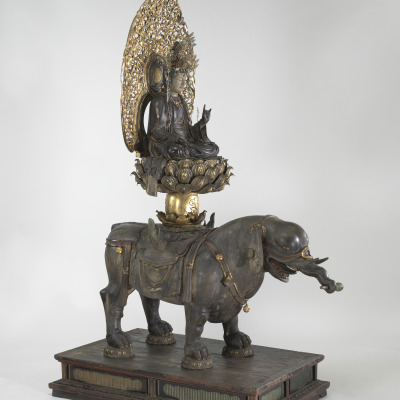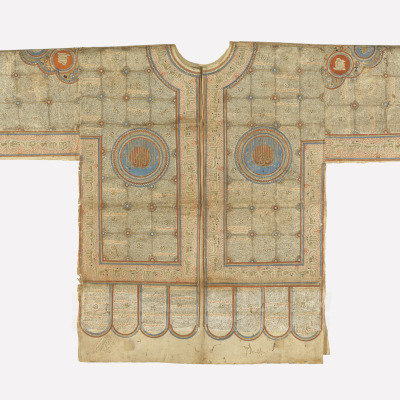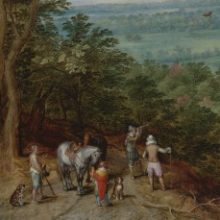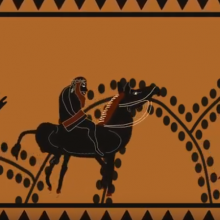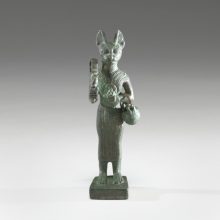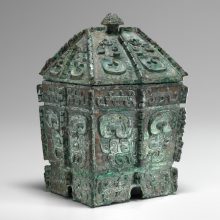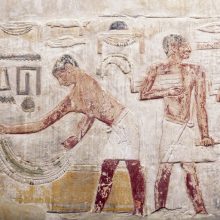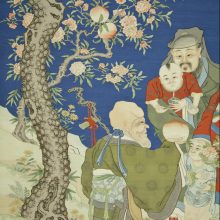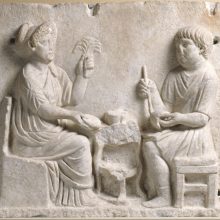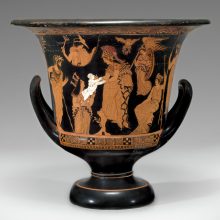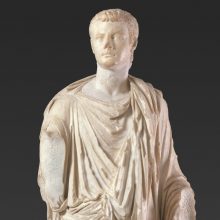Geography often plays a significant role in cultural exchange. This was particularly true in antiquity for cultures that lived near the Mediterranean Sea. For example, although ancient Greece had rivers, they were smaller than great rivers like the Nile—and most of the land in mainland Greece was mountainous with relatively poor soil. But Greece has numerous peninsulas with good harbors and easy access to the Mediterranean and Black Seas, that allowed many Greeks to become seafaring traders. During the 8th – 6th centuries, these traders founded colonies along the coastlines, including Egypt, as well as on the islands of the Mediterranean. Greeks traders exchanged wine, olives,and pottery, for items such as grain, wood, and precious metals. As goods were exchanged, so were artistic designs, technologies, stories and ideas.
This large amphora, or storage jar, comes from Crete, the largest of the Greek islands. Almost five feet tall, this decorated vessel is more than 2600 years old. The decorations include alternating knobs and rosettes at the base of the neck and rosettes stamped on the lip. Molds and stamps, which were used in making this amphora, were technological conventions found in Near Eastern and Egyptian art. These ornamentation, as well as the vertical bands on the body, also resemble patterns found on late reliefs from the Assyrian Empire of the Near East.
The mythological creatures in the band near the top are sphinxes. The concept of the sphinx, which has the body of a lion, the wings of an eagle, and the head of a woman, originated in ancient Egypt. The Greeks later incorporated this Egyptian monster into their own works of art and mythology. Ancient Greek sources relate a story about a sphinx who plagued the Greek city of Thebes. She would allow no one into the city who could not solve her famous riddle: “What goes on four legs in the morning, on two legs at noon, and on three legs in the evening?” According to the story, Oedipus, who later became the king of Thebes, solved the riddle. He answered that it was man, who crawls on all fours as a baby, walks on two legs as an adult, and uses a cane in old age.
